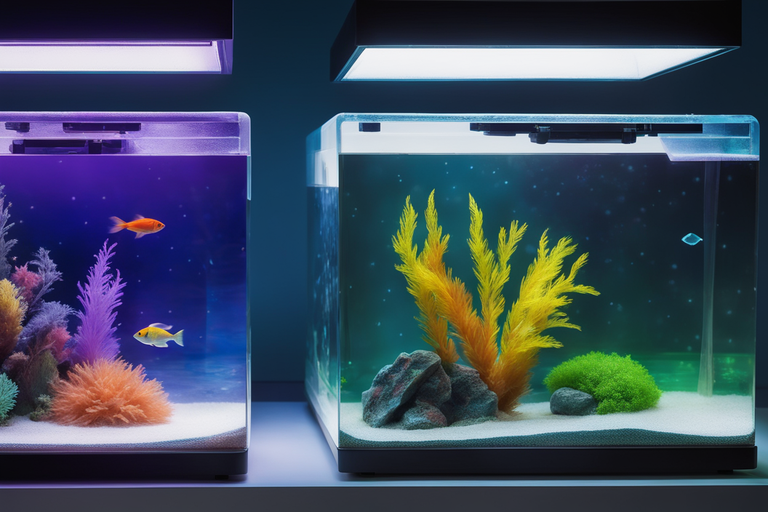Are you considering an aquarium for your home or office? If so, you’ll need to decide between glass and acrylic.
This article will give you an in-depth look at the differences between the two materials. We’ll compare their material composition, weight, price, and durability. Plus, we’ll explore the pros and cons of each and offer advice on which type of tank is best for your needs.
Whether you’re a beginner or an experienced hobbyist, this guide will help you make an informed decision.
Material Composition
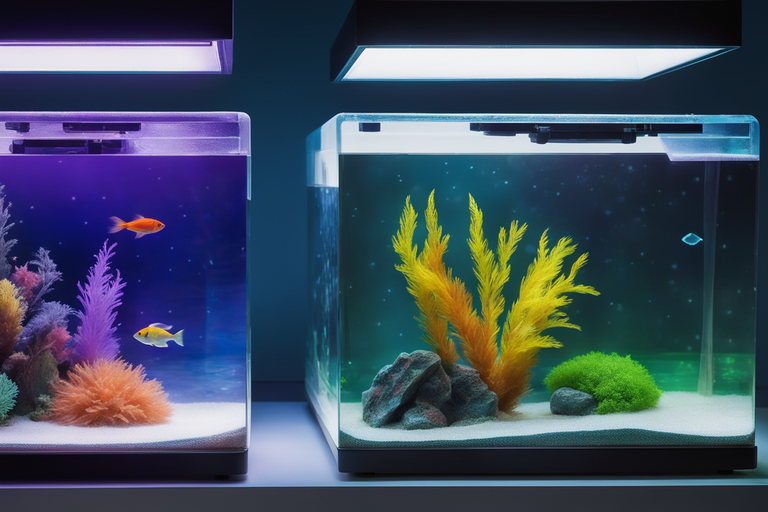
When comparing glass and acrylic aquariums, you should consider the material composition of each, as glass is made of silica sand and soda ash while acrylic is composed of a polymer material.
Acrylic offers several advantages over glass, such as its lightweight, impact resistance, and ability to come in various shapes. It can also be more suitable for homes with active children or pets since it’s less likely to chip or break. However, it’s more prone to scratches and discoloration, which can be challenging to remove.
Glass, on the other hand, is scratch-resistant and offers better clarity, but it’s heavier and less impact-resistant. It’s also more expensive and can leak, although it can be repaired with aquarium-safe glue. Furthermore, glass is better for growing aquatic plants with UV grow lights.
In terms of cleaning instructions, both glass and acrylic aquariums should be regularly cleaned.
Ultimately, the choice between glass and acrylic depends on individual preferences and requirements. Glass is praised for its affordability, durability, clarity, and scratch resistance, while acrylic is favored for its versatility, impact resistance, and suitability for modifications.
Weight and Price
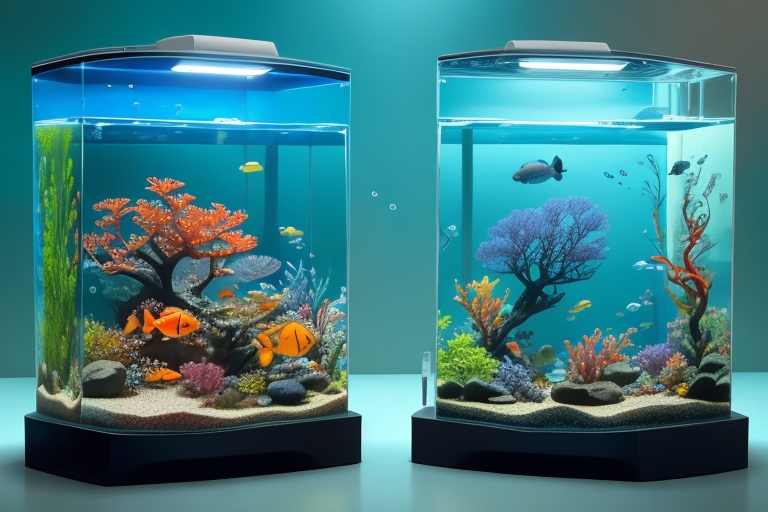
You may find that glass tanks are significantly heavier than acrylic, but also more expensive. Cost is a major consideration when it comes to selecting a tank.
Glass tanks are usually more expensive than acrylic, but may be a better investment in the long run due to their scratch resistance and superior clarity. Acrylic tanks may be more affordable in the short term, but are more prone to scratches and discoloration over time.
Weight is also an important factor to consider. Glass tanks are typically heavier, making them more difficult to move. On the other hand, acrylic tanks are usually lighter and more impact-resistant. For homes with active children or pets, acrylic tanks may be a better option as they’re less likely to break or chip.
Glass tanks offer superior clarity and are better suited for growing aquatic plants with UV grow lights. Acrylic tanks, on the other hand, may provide more visual aesthetics but can discolor over time.
Both types of tanks require regular cleaning and maintenance, but acrylic tanks are easier to repair with aquarium-safe glue if they leak.
The choice between glass and acrylic aquariums depends on individual preferences and requirements, such as cost, weight, impact resistance, and visual aesthetics. Glass tanks are more scratch-resistant and offer better clarity but are heavier and more expensive. Acrylic tanks are lighter and more impact-resistant but prone to scratches and discoloration.
The decision will ultimately depend on what suits your needs and budget.
Durability
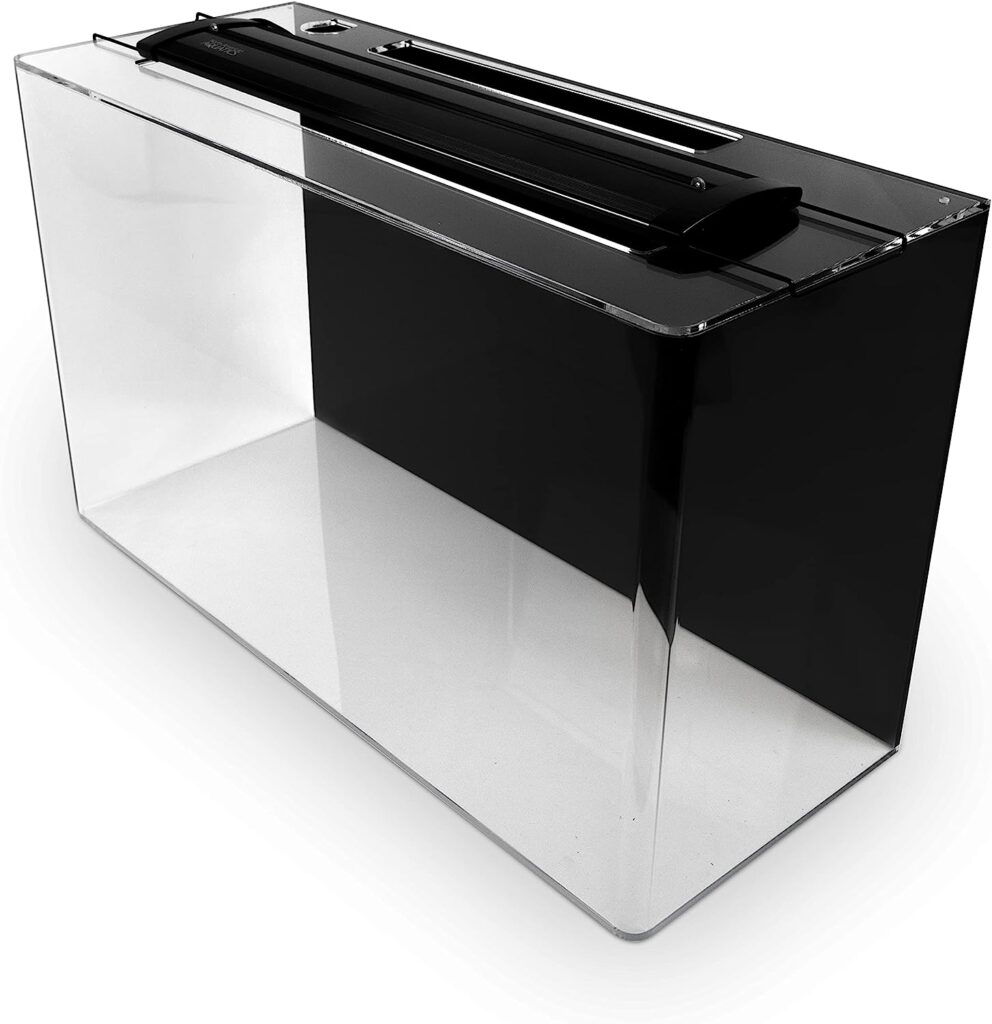
Glass tanks are generally more durable than acrylic tanks, as they’re scratch-resistant and rigid, while acrylic is prone to scratches and can flex. Impact resistance, scratch resistance, and longevity are all major advantages of glass over acrylic. Glass also requires less maintenance and provides better water clarity than acrylic. Structural integrity is another key factor in the durability of an aquarium, and glass tanks offer superior support compared to acrylic. In addition, glass tanks have a lower environmental impact than acrylic, are more cost-effective in terms of long-term use, and are resistant to discoloration.
When it comes to repairability, acrylic tanks have an advantage over glass as they can be easily repaired with aquarium-safe glue. However, glass tanks are more reliable overall and less likely to require repair.
The durability of glass and acrylic tanks can be summarized in the following list:
Advantages of Glass:
- Impact resistance
- Scratch resistance
- Longevity
- Maintenance requirements
- Water clarity
- Structural integrity
- Environmental impact
- Cost effectiveness
- Resistance to discoloration
Advantages of Acrylic:
- Repairability options
- Lightweight
- Easier to modify
Clarity
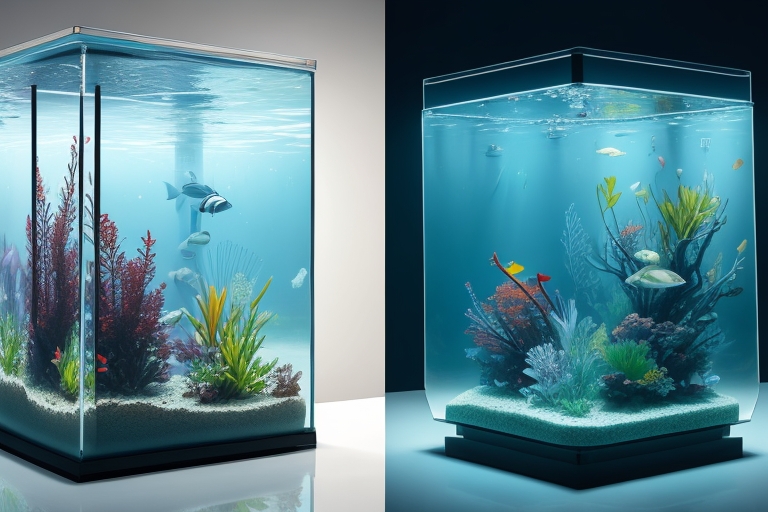
| Regularly, you will find that glass aquariums provide superior clarity compared to acrylic aquariums. | Glass | Acrylic |
|---|---|---|
| Visual Distortion | Less | More |
| Transparency Comparison | Better | Worse |
| Clarity Factors | Superior | Inferior |
| Reflections and Glare | Minimal | Significant |
| Impact Resistance | Good | Poor |
| Scratch Resistance | Excellent | Poor |
| Discoloration Issues | None | Can Discolor |
| Maintenance and Cleaning | Easy | Difficult |
| Long Term Durability | High | Low |
| UV Protection | Good | Poor |
| Glass tanks offer the most clarity with minimal reflection and glare, while acrylic tanks can suffer from distortion and discoloration over time. Furthermore, glass tanks are better at resisting scratches, impact, and UV damage, making them a better choice for long-term durability. Cleaning and maintenance of glass tanks is relatively easy, while acrylic tanks may require extra care. This makes glass the better option for clarity and long-term performance. With these advantages, it is no surprise that glass aquariums are the preferred choice for most aquarium hobbyists. Now that we’ve discussed the clarity of glass vs. acrylic aquariums, let’s look at how they compare when it comes to growing aquatic plants. |
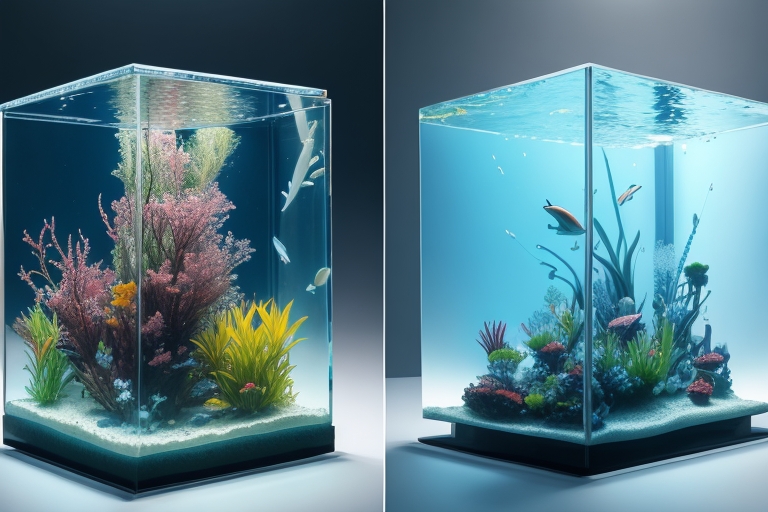
Growing Aquatic Plants

When it comes to growing aquatic plants, you’ll find that glass aquariums are the preferred choice due to their superior clarity and durability. They provide an ideal environment for aquatic plant growth, with optimal lighting options, nutrient requirements, and CO2 supplementation.
Here’s what you need to know for successful aquatic plant growth:
- Aquatic Plant Care:
- Lighting Options: Select a light that’s suitable for the type of aquatic plants you wish to grow.
- Nutrient Requirements: Make sure the nutrient requirements of your aquatic plants are met.
- CO2 Supplementation: Use CO2 supplementation to optimize plant growth.
- Substrate Choice:
- Plant Species Selection: Choose the right aquatic plants for your tank.
- Pruning Techniques: Prune your aquatic plants to maintain their health and growth.
- Fertilization Methods: Use the right fertilization methods for your aquatic plants.
Modifications and Ease of Movement
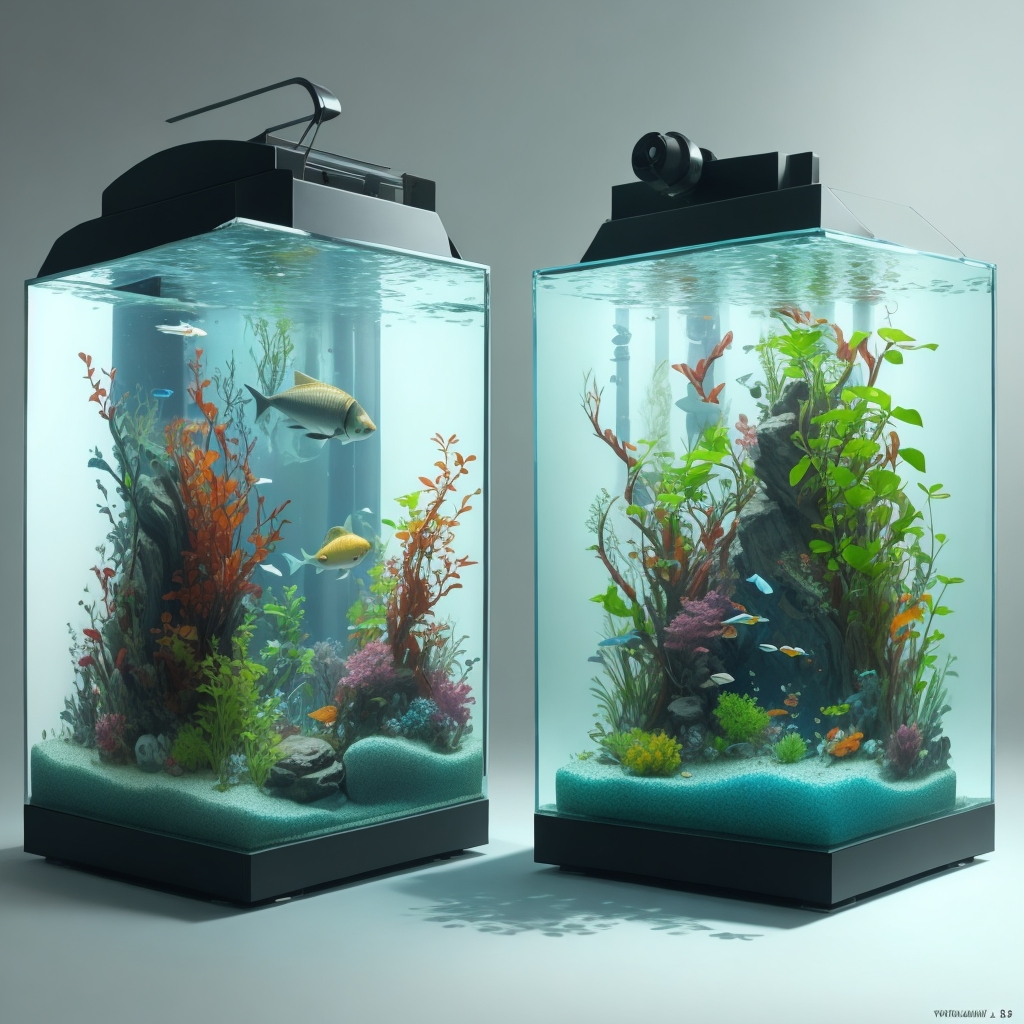
You’ll find that acrylic aquariums offer more flexibility in terms of modifications and ease of movement compared to glass aquariums.
Acrylic tanks are lightweight and can be modified easily, making them the preferred choice for customizing aquariums. They can be shaped and cut to fit specific aquarium customization needs, and their lightweight makes them easier to move when transporting fish tanks.
Glass aquariums, on the other hand, are much heavier and more difficult to move. Although modifications to glass aquariums can be made, they’re more labor-intensive and costly. Acrylic tanks allow for easier alterations to the tank shape, while glass tanks are more difficult to modify.
Additionally, acrylic tanks are easier to adjust and move around due to their light weight and flexible structure. Glass tanks, however, can be difficult to move and adjust due to their weight and rigidity.
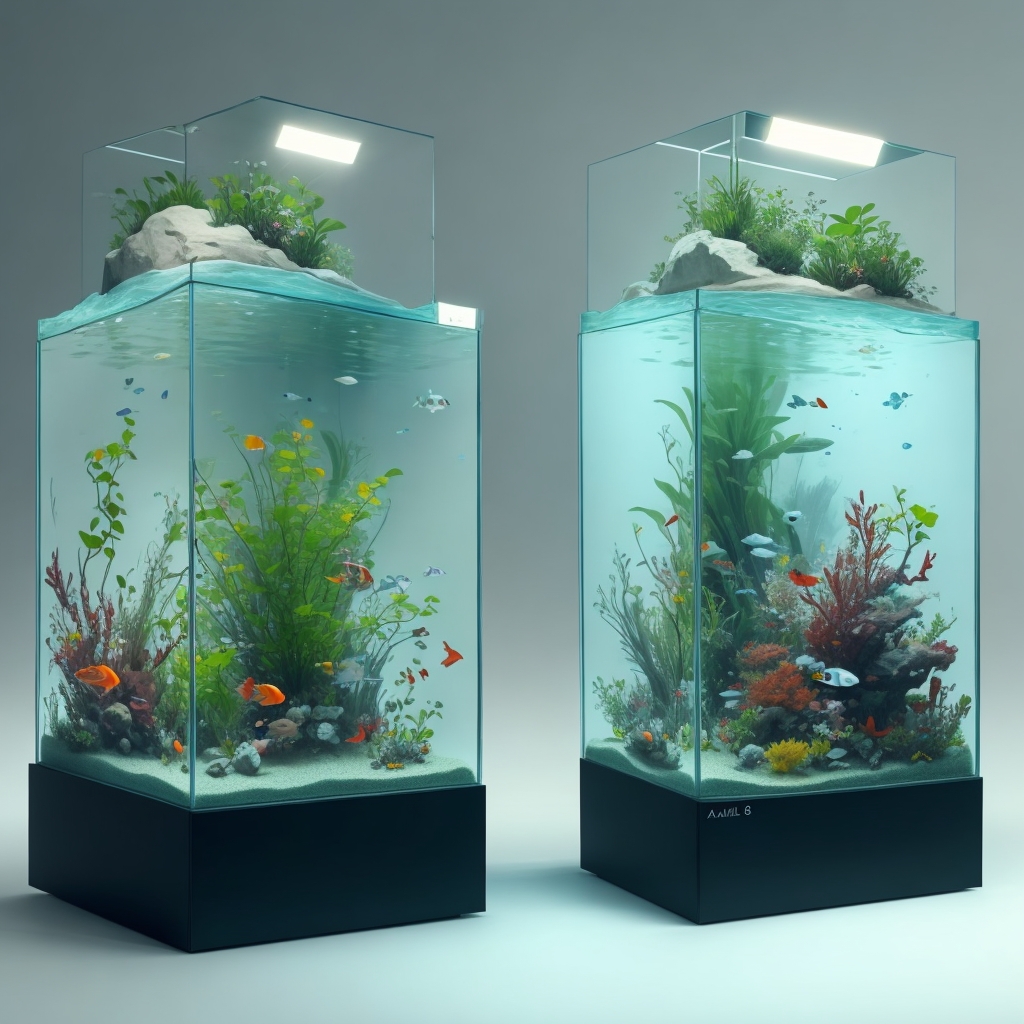
In terms of aquarium customization, acrylic tanks provide more options for modifying tank shapes and adding features, while glass tanks can be limited in terms of customization options.
When it comes to the mobility of fish tanks, acrylic tanks are more suitable due to their light weight and easy transportation. Glass tanks can be difficult to move and transport due to their weight, and modifying glass tanks is more labor-intensive than modifying acrylic tanks.
Overall, acrylic aquariums are the better choice for tank customization and ease of movement.
Conclusion
Glass and acrylic aquariums each have their own unique benefits and drawbacks. Glass is heavier and more expensive, but offers superior clarity and durability.
Acrylic is lightweight and more affordable, but scratches more easily.
Ultimately, the type of aquarium you choose depends on your budget, preferences, and needs.
Whichever material you choose, you can be sure that your aquarium will last a long time with proper maintenance and care.

